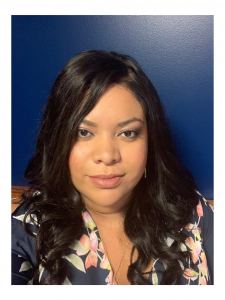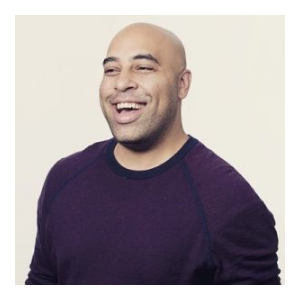María Inés Zamudio is the recipient of the 2020 Cecilia Vaisman Award from Northwestern University Medill School of Journalism, Media, Integrated Marketing Communications and the National Association of Hispanic Journalists. Zamudio covers immigration for WBEZ, the Chicago NPR affiliate.
The Vaisman award honors an individual working in audio or video journalism who works every day to shed light on the various issues affecting Hispanic and Latinx communities inside and outside the United States and is an active member of the NAJH. It is given jointly by NAJH and Medill, and includes a $5,000 cash prize. The award is named for Medill faculty member Cecilia Vaisman who died in 2015.
“María Inés’ reporting brings to her listeners a greater understanding of the challenges faced by the Latinx and other immigrant communities in Chicago,” said Medill Dean Charles Whitaker. “These are critically important stories to bring attention to as our city and nation grapple with what it means to be a diverse and inclusive society. I’m delighted we get to honor María Inés’ work with this award that is so meaningful to Medill.”
Zamudio’s nomination was reviewed and selected by a jury of Medill and NAHJ representatives, including members of the NAHJ Chicago chapter. The award criteria was determined by the jury.
“I am honored to receive this award, and to represent the communities I report on in doing so. I love the work that I do and having that work recognized by Medill and the NAHJ is humbling,” said Zamudio. “I hope more Hispanic and Latinx communities and journalists get the recognition they deserve.”
Zamudio is an investigative journalist and part of the race, class and communities team at WBEZ, Chicago’s NPR news source. Prior to her time at WBEZ, Zamudio worked for American Public Media’s investigative team.
In 2015, Zamudio and a team of reporters from NPR’s Latino USA received a Peabody National Award for their coverage of Central American migrants. Zamudio’s story was reported from the Mexico-Guatemala border and it focused on the danger women from Central American while traveling through Mexico as they try to reach the United States.
She’s also worked for the Memphis Commercial Appeal and Chicago Reporter magazine as an investigative reporter. Zamudio’s work has appeared in The Associated Press, New York Times, National Public Radio, NBC 5 Chicago, Telemundo and Univision among others.
“NAHJ is elated to celebrate María Inés Zamudio as the 2020 Vaisman award recipient,” said Hugo Balta, two-time NAHJ President. “Her service in media honors the work and legacy of Cecilia Vaisman to ensure representation of Hispanic and Latino communities in the news does not remain a monolith.”
Zamudio’s contributions will be highlighted during a virtual award ceremony hosted by Medill Nov. 11 in partnership with NAHJ.






 Bradley Akubuiro (BSJ11) is the chief spokesperson and senior director of global media relations for The Boeing Company, the largest aerospace manufacturer in the world. In this role, he is responsible for leading Boeing’s team of company spokespeople enterprise wide in their efforts to advance and protect the company’s interests around the globe. Akubuiro has provided leadership and counsel through the company’s response to COVID-19, the national conversation around race and several news making challenges and milestones in its effort to return the grounded 737 MAX to commercial service.
Bradley Akubuiro (BSJ11) is the chief spokesperson and senior director of global media relations for The Boeing Company, the largest aerospace manufacturer in the world. In this role, he is responsible for leading Boeing’s team of company spokespeople enterprise wide in their efforts to advance and protect the company’s interests around the globe. Akubuiro has provided leadership and counsel through the company’s response to COVID-19, the national conversation around race and several news making challenges and milestones in its effort to return the grounded 737 MAX to commercial service. Marcia Davis is the supervising editor of race and identity at National Public Radio. She joined NPR in June 2020. A native of St. Louis, she spent more than 20 years as an editor and writer at The Washington Post.
Marcia Davis is the supervising editor of race and identity at National Public Radio. She joined NPR in June 2020. A native of St. Louis, she spent more than 20 years as an editor and writer at The Washington Post. Matt Murray (BSJ87, MSJ88) is editor in chief of The Wall Street Journal and Dow Jones Newswires, responsible for all global newsgathering and editorial operations.
Matt Murray (BSJ87, MSJ88) is editor in chief of The Wall Street Journal and Dow Jones Newswires, responsible for all global newsgathering and editorial operations. Emily Ramshaw (BSJ03), is co-founder and CEO of The 19th, a nonprofit, nonpartisan newsroom reporting at the intersection of gender, politics and policy. Most recently, Ramshaw was the editor-in-chief of The Texas Tribune, a Peabody Award-winning, 10-year-old news startup that boasts the largest statehouse bureau in the nation, powers the pages of newspapers across Texas and the nation, and is considered the gold standard for sustainability in local news. She is also the youngest person ever to be named to the board of the Pulitzer Prize, where she is serving a nine-year term.
Emily Ramshaw (BSJ03), is co-founder and CEO of The 19th, a nonprofit, nonpartisan newsroom reporting at the intersection of gender, politics and policy. Most recently, Ramshaw was the editor-in-chief of The Texas Tribune, a Peabody Award-winning, 10-year-old news startup that boasts the largest statehouse bureau in the nation, powers the pages of newspapers across Texas and the nation, and is considered the gold standard for sustainability in local news. She is also the youngest person ever to be named to the board of the Pulitzer Prize, where she is serving a nine-year term.






